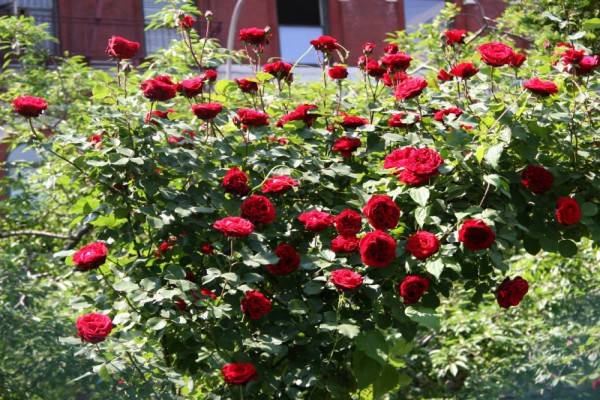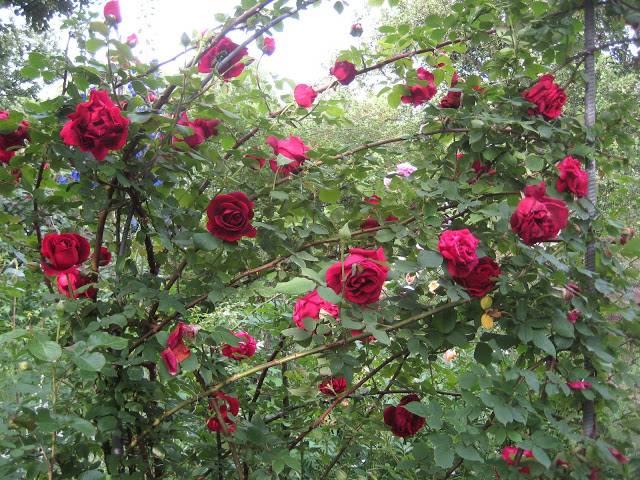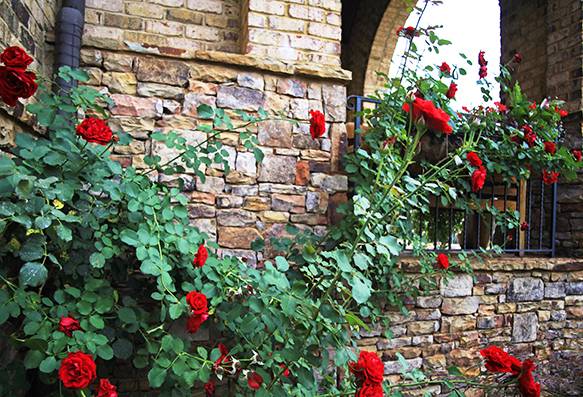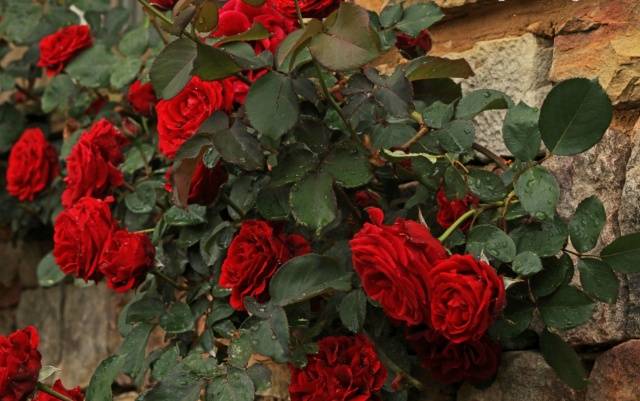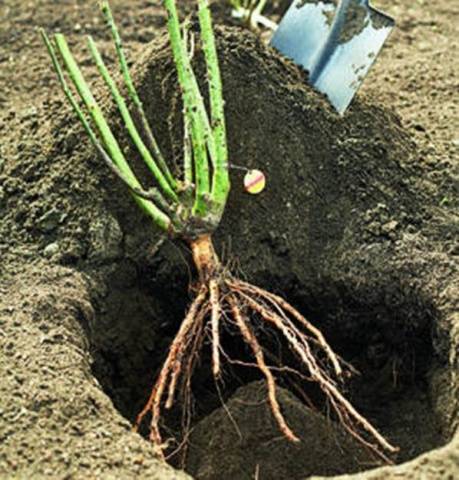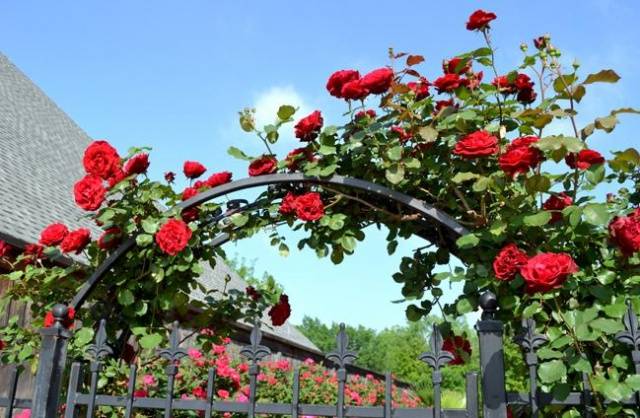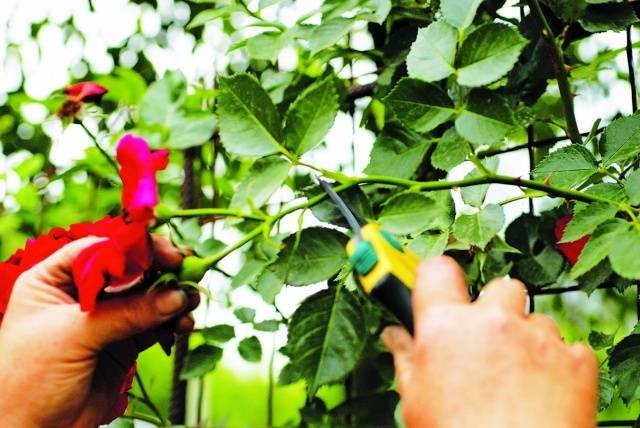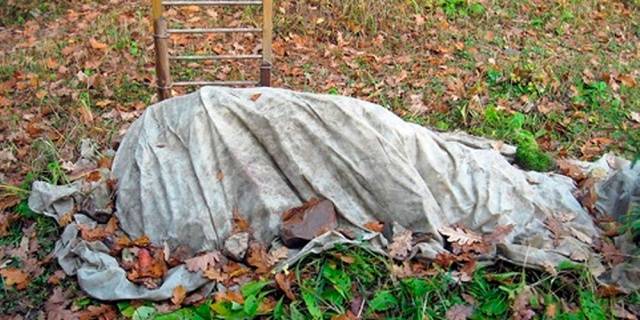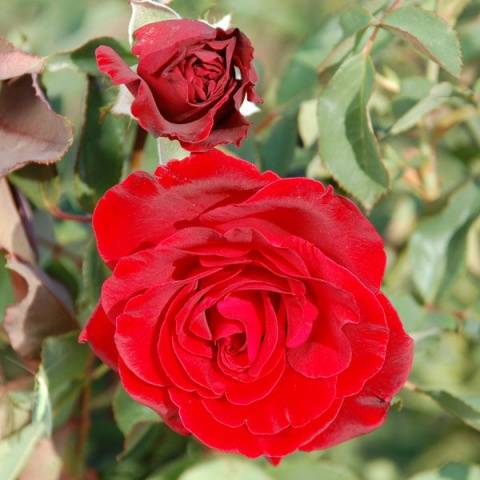Content
Roses are our favorite flowers and can beautify our garden from spring to autumn. But when buying in their variety, it is easy to get confused. This is not surprising, because even experts do not know exactly how many varieties exist today. Some argue that there are 25,000, others call the number 50,000. In any case, there are a lot of varieties of roses, all of them are beautiful, they can bloom once a season or all summer, there are disease-resistant ones, but there are some that you need to tinker with.
Climbing roses are always popular, because they can be grown in the form of a creeper, covering the wall of a house, an arch or a pergola, or they can be formed in the form of a huge spreading bush. Today our heroine will be the rose "Don Juan".
Description of the rose "Don Juan"
Of course, all roses are good, and it is thankless to say which one is better. But the variety "Don Juan", in addition to its beauty and all its other positive qualities, grows well in our conditions, and even in a harsh climate, which has earned our close attention.
Appearance and features of the variety
Rose "Don Juan" (Don Juan) was registered in 1958 by the Italian company "Malandrone". It belongs to the large-flowered climbing roses or climbers blooming on the shoots of this year.
The plant forms a powerful bush with erect shoots up to 2-2.5 meters long. In some cases, under especially favorable conditions, the branches can reach 3 meters or more. If they are not bred on a vertical support, after a couple of years, a sprawling tall bush about 2 meters wide will form. A feature of the variety is that the old shoots have a two-color color - they are painted red and brown, which only adds to the decorative effect.
The flowers of the climbing rose "Don Juan" are cupped, medium double, with 35 petals. They have a delicate aroma, are painted in dark purple or red, reach a size of 10-12 cm. The inflorescences consist of 3-5 flowers and cover the bush throughout the season.
It is noteworthy that the Don Juan variety blooms profusely, and continuously throughout the season, and not repeatedly, when one flowering wave after a short time is replaced by another, and then only rare buds appear before frost. Although for climbers, re-flowering is the rule, but such a long and prolonged one is a rarity even for them.
The description of the variety is completed by matte dark green leathery leaves.
Variety resistance
No matter how beautiful roses are, they often get sick, which gives the owners a lot of trouble. All the imperfections on climbing roses are especially noticeable - a bush formed on a trellis or around a support cannot hide anywhere leaves touched by the disease, or petals blackened after rain. In addition, we can not fear for wintering only in the southern regions.
A completely different story with the variety "Don Juan". This rose has shown itself to be extremely resistant for almost six decades.
Don Juan is distinguished by its exceptional resistance to black spot and powdery mildew. This rose is also not prone to getting wet - its flowers do not deteriorate in the rain, the buds open, the petals do not turn black and do not rot. But for many excellent varieties, prolonged inclement weather is a real disaster.
We have already spoken about winter hardiness - it is beyond praise.And although the rose still needs to be covered for the winter and it may freeze slightly, the variety recovers very quickly. An old bush, even thoroughly frozen in a particularly harsh winter, which has several living buds, is capable of giving an increase of about one and a half meters in a year and blooming.
Agrotechnics
We have already written in detail about planting, pruning, leaving, garter to the supports of climbing roses. We will repeat only the main points, and we will focus on the peculiarities of the cultivation of the Don Juan variety.
Accommodation and boarding
The rose will grow most comfortably in a sunny, wind-protected place. But it grows well in partial shade, without losing its decorative qualities. Actually, this variety is quite enough with the sun that it can get in the morning - you can place it so that after lunch it is devoid of direct sunlight.
The best time to plant roses is spring and autumn. Moreover, in regions with a cool climate and harsh winters, it is best to plant them in April-May, so that the plant can take root during the warm season, and in the southern regions - in the fall.
If you are planting the Don Juan variety near the wall of the house, dig the planting hole at least 40 cm from the support. It should be 60 cm in diameter and 30 cm deep. Pour some planting mixture at the bottom of the hole and place the seedling in it so that its roots are directed in the opposite direction from the wall. Sprinkle them with the prepared substrate, tamp them carefully, add soil and water abundantly. To do this, you need at least 15 liters of water. Spud the rose, no matter what time of the year you plant it.
If your soil is poor, add a bucket of well-rotted compost or humus.
If you are planting several climbing roses, the distance between the bushes should be at least 3 meters.
Seasonal care
In the first months after planting, especially if it was carried out in the spring, the rose needs to be watered abundantly, spending at least 15 liters of water under the bush. Water the plant further as the soil dries out, as climbing varieties require more watering than other varieties. Watering should be abundant.
Feed this rose regularly - it grows quickly and blooms profusely throughout the season, therefore, requires increased nutrition. Foliar dressing gives very good results. The rose also needs to loosen the trunk circle, especially if you have not mulched it.
Bush formation
Rose "Don Juan" can be formed on a trellis - against the wall of the house, on a pergola, trellis or trellis, placing the main branches horizontally or in a fan and tied with strong twine or thick wire in plastic sheath.
A plant formed around a post, on an arch or next to a large tree will look very good. In this case, the main shoots are directed vertically and tied to a support.
The Don Juan rose has powerful thick stems. It can not be tied to a support, but formed in the form of a tapeworm (single focal plant) or a hedge (in this case, the distance between the bushes during planting is reduced to 2 meters).
Pruning
Cut only weak and immature shoots from a young rose. If you grow the Don Juan rose on a trellis, then every spring, immediately after removing the winter shelter, cut out all frozen and weak shoots, shorten the main and skeletal branches by a third. All young twigs of last year, which are not needed for the further formation of the bush, cut by a third or remove altogether - the rose "Don Juan" blooms on the young growth of this year.
When growing a plant without a support, only sanitary pruning and pruning of excessively long lashes will be obligatory if they suddenly go "in the wrong place."
Shelter for the winter
The Don Juan variety has high frost resistance, but this does not mean that it is capable of hibernating without shelter and does not freeze. The more severe your climate, the more serious the shelter.
With the onset of the first frost, the rose is removed from the support, all weak or unripe shoots are cut out, spud and laid on spruce branches, covering the lashes from above with it. If a harsh winter is expected, spruce branches are covered with agrofibre or spunbond.
It is very important to take it off on time - the roses are more likely to be destroyed by damping out than freezing.
We offer you to watch a video dedicated to the cultivation and care of the climbing rose "Don Juan". There you will also hear feedback from flower growers about its winter hardiness and decorativeness:
Conclusion
Rose "Don Juan" is a recognized favorite among climbing varieties with red flowers. We hope you enjoy it too.
